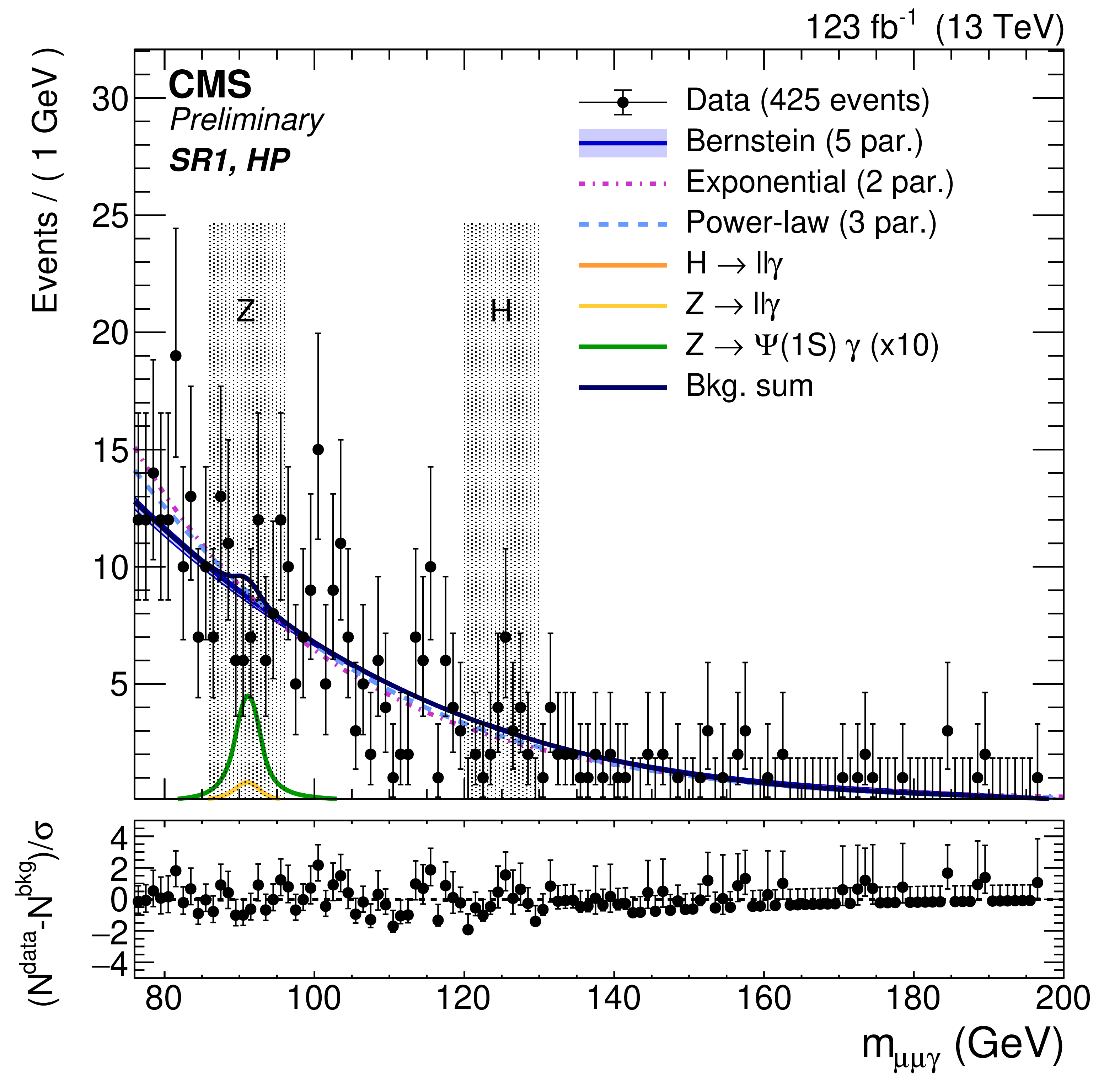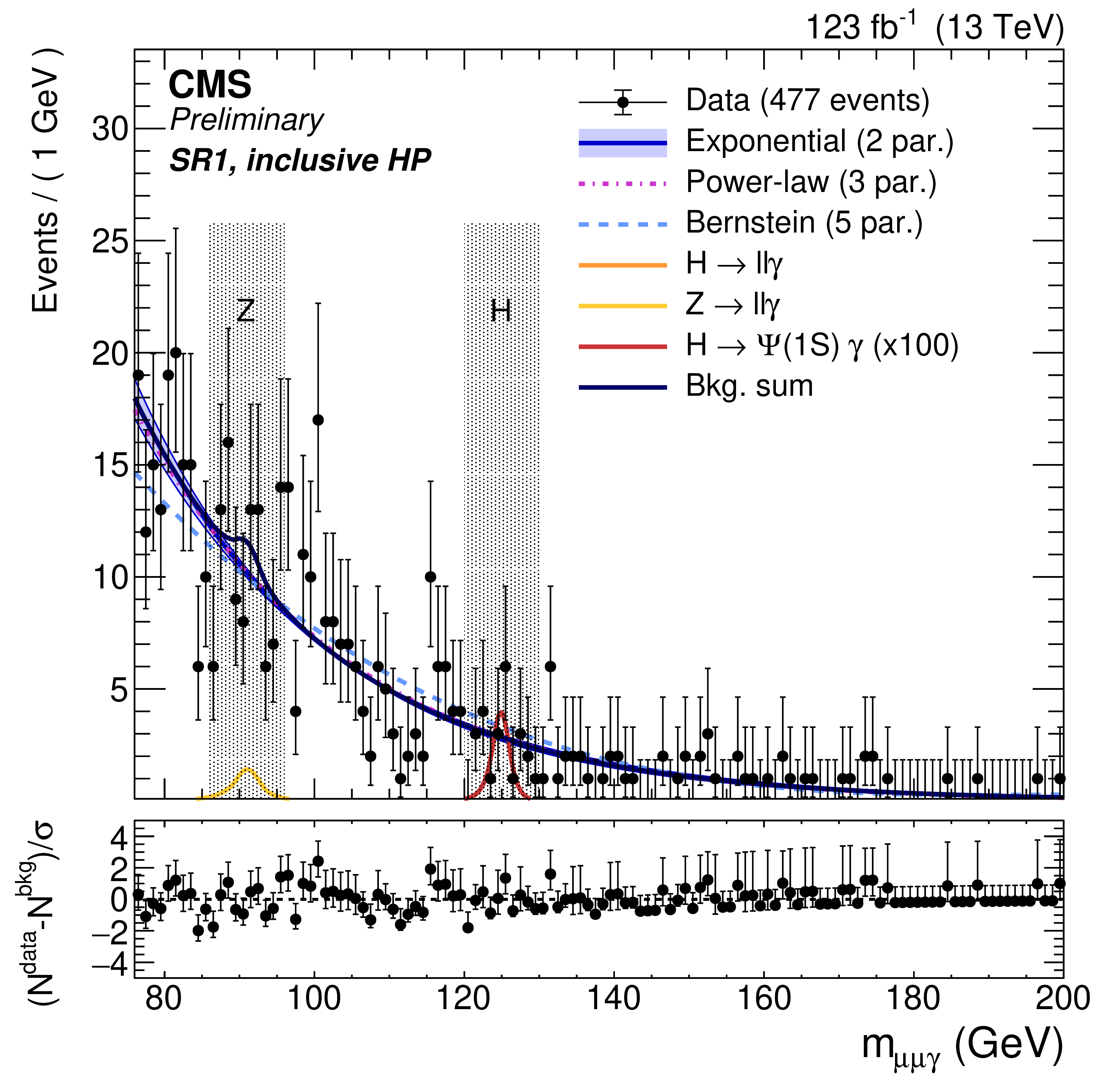
A proton-proton collision at a centre-of-mass energy of 13 TeV, recorded by CMS, compatible with the production of a Higgs boson decaying to a J/ψ meson, which decays to two muons (red lines), and a high-energy photon (green box, top). Try to zoom and rotate the interactive event display.
The CMS collaboration delves into the intricate realm of ultra-rare particle physics events, focusing on one of the rarest decays of the Higgs boson. In this process, the Higgs boson transforms into a highly-energetic photon, the quantum of light, and a J/ψ particle that is subsequently decaying into a pair of particles known as muons. Consider this: out of a million Higgs bosons produced, merely three undergo this specific decay! It's a precision-filled journey of discovery, crucial for completing the puzzle of fundamental particles, particularly understanding the Higgs coupling to the charm quark. Notably, also the Z boson is expected to decay in the same way, but at an even smaller frequency: only 90 times out of a billion Z bosons!
Amidst billions of collisions, CMS meticulously selects the very few events closely resembling the sought-after signature: two long tracks from opposite-sign muons (depicted in red in the image above), accompanied by a substantial energy deposit in the CMS electromagnetic calorimeter (the green “tower”). However, this criterion alone isn't sufficient. Only muon-pairs within a precise invariant mass interval, suspected to originate from a J/ψ or its heavier sibling, the ψ(2S), are considered in the analysis. Additionally, the angles in the decays are leveraged to distinguish our signal-like events from others (the “background”). Thanks to the exceptional accuracy of CMS for the measurement of muons and photons, the Higgs and Z boson events manifest themselves in a narrow region in the invariant mass of the three particles, as represented in Figure 2, aligning well with the nominal mass of the bosons.
 |
 |
Figure 2: Distribution of the invariant mass of the two muons and the photon in the search for the Z (left) and Higgs (right) boson decays. The measured data (black dots) are compared to the sum of two expected backgrounds (blue and yellow lines). The hypothetical Higgs and Z boson signals are represented by the green and red lines, respectively.
Thanks to the exceptional accuracy of CMS for the measurement of muons and photons, the Higgs and Z boson events manifest themselves in a narrow region in the invariant mass of the three particles, as represented in Figure 2, aligning well with the nominal mass of the bosons. "Studying extremely rare decays of the Higgs boson to a quarkonium and a photon represents an exciting challenge of paramount importance in the understanding of the Higgs couplings to the 2nd generation of fermions", said Rocco Ardino, from the CMS analysis team. "It is amazing to see that the CMS detector is able to match such a challenge, thanks to its excellent reconstruction performance", added Alberto Zucchetta.
As CMS consistently gathers additional data over the years to precisely measure the predicted elusive particles within the Standard Model of particle physics, we are still on the journey toward our ultimate goal. CMS has not yet observed any excess, for now only placing constraints on the strength of the Higgs boson's coupling to the charm quark, in theoretical models that predict significant variations in the rate of these exceptional decays (shown in Figure 3). The revelation of what Nature has reserved for us hinges solely on new data!

Figure 3: Upper limits (at 95% confidence level) for each of the four decays considered: Z or Higgs bosons decaying to J/ψ (denoted by ψ(1S)) or ψ(2S) mesons.
Read more about these results:
-
CMS Physics Analysis Summary "Search for the rare decays of the Z and Higgs bosons to a or meson and a photon in proton-proton collisions at 13 TeV"
-
@CMSExperiment on social media: LinkedIn - facebook - twitter - instagram
- Do you like these briefings and want to get an email notification when there is a new one? Subscribe here

